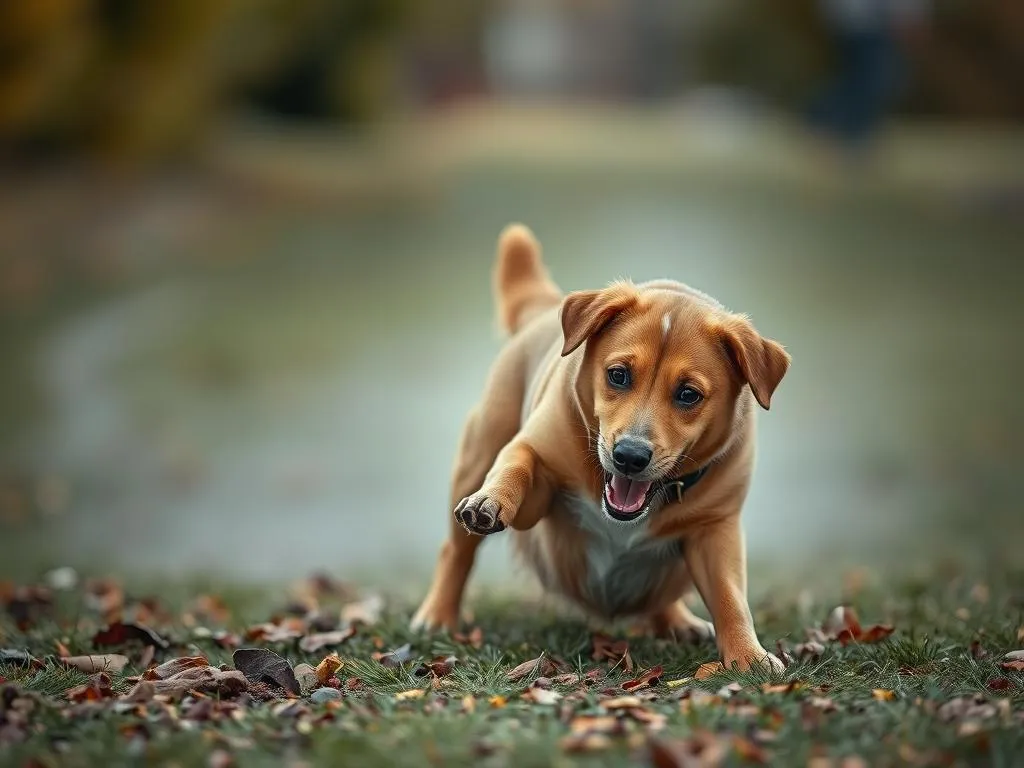
Understanding canine behavior can be a fascinating journey, revealing the complexities of our furry friends. Among the myriad of habits that dogs exhibit, one particularly intriguing behavior is when they kick their hind legs after urination. This peculiar action raises questions for many dog owners: Why do dogs kick after they pee? In this exploration, we will delve into the reasons behind this behavior, its roots in instinct, and how it reflects your dog’s personality and communication style.
Understanding Canine Behavior
The Nature of Dog Instincts
Dogs, like their wild ancestors, are creatures driven by instinct. Many behaviors we observe today, including kicking after urination, are remnants of these primal instincts. Wild canines, such as wolves and foxes, exhibit a range of behaviors that help them survive and thrive in their environments. When you see a dog kick after they pee, it often harkens back to these instinctual actions—an echo of their wild ancestry.
Communication Among Dogs
Canines are adept communicators, using body language and scent to convey messages to one another. Dogs have a complex social structure, and their behaviors often reflect their need to communicate with both humans and other dogs. One crucial aspect of this communication is scent marking; when a dog urinates, they leave behind not just a liquid but a signature scent that conveys vital information to other dogs, such as identity, health, and territory.
The Kicking Behavior Explained
What is Kicking After Peeing?
Kicking after urination involves a dog scratching the ground with their hind legs, often creating a small cloud of dirt or grass. This behavior is commonly observed in both male and female dogs, although it may be more pronounced in males. Typically, this kicking occurs immediately after they finish urinating, and it can vary in intensity and duration.
Reasons Behind the Behavior
Scent Marking
One of the primary reasons dogs kick after they pee is scent marking. Dogs have scent glands located in their paws, and when they kick the ground, they help spread their urine and the accompanying scent. This action reinforces their presence in the area, sending a signal to other dogs that they have claimed this territory. The kicking motion can disperse their scent over a wider area, enhancing the marking effect.
Instinctual Behaviors from Ancestry
Historically, kicking behavior can be traced back to wild canines, where it played a role in establishing territory. When a wild dog or wolf kicked the ground, it would scatter its scent, marking the area as its own and warning other canines to stay away. This instinctual behavior has been retained in domesticated dogs, emphasizing their connection to their wild ancestors.
Excitement or Overstimulation
Another factor contributing to the kicking behavior may be excitement or overstimulation. Dogs are energetic creatures, and when they pee, they may be expressing relief or excitement. This can be especially true in situations where they are outdoors, encountering new smells, or interacting with other dogs. Different breeds may also exhibit variance in this behavior, with some being more prone to kicking due to their temperament.
Debunking Myths Around Kicking
Common Misconceptions
There are several myths surrounding the behavior of kicking after urination. One common misconception is that it signifies dominance. In reality, this behavior is more aligned with territory marking rather than asserting dominance over other dogs. Additionally, some people may worry that this behavior indicates a health issue, but in most cases, it is simply a normal part of canine behavior.
Scientific Studies and Findings
Various studies have examined canine behaviors, including kicking after urination. Experts agree that this behavior is primarily a natural instinct rather than a sign of aggression or dominance. Research indicates that dogs engage in this behavior as a means of communication and territory establishment. Understanding these scientific findings helps dispel myths and encourages dog owners to appreciate their pet’s unique habits.
Observing Your Dog’s Behavior
Recognizing Normal vs. Abnormal Kicking
Understanding what constitutes normal kicking behavior is vital for dog owners. Typically, normal kicking is characterized by a quick motion immediately following urination. However, if a dog is kicking excessively, seems distressed, or displays other unusual behaviors, it may indicate an underlying issue. Observing your dog’s overall demeanor can provide clues to whether their kicking behavior is typical or abnormal.
How to Manage Kicking Behavior
If you find your dog’s kicking after urination to be excessive or undesirable, there are ways to manage it. Training techniques can help redirect this behavior. Positive reinforcement is essential; reward your dog when they urinate without kicking, gradually teaching them that they can relieve themselves without the extra motion. Consistency in training methods will help reinforce desired behaviors and can create a more peaceful outdoor experience for both you and your dog.
The Role of Environment and Training
Environmental Factors Influencing Behavior
The environment can significantly influence a dog’s kicking behavior. Factors such as the presence of other dogs, new scents, or unfamiliar territory can trigger a dog to kick more vigorously after urination. In familiar surroundings, a dog may kick less frequently. Additionally, socialization plays a crucial role in how a dog learns to interact with their environment and what behaviors are acceptable.
Training Techniques to Modify Behavior
Training can be a powerful tool to modify unwanted kicking behavior. Techniques such as desensitization—gradually exposing your dog to situations that trigger kicking—can help them feel more comfortable. Commands like “leave it” or “no kick” can also be taught to redirect their focus. Always remember to use positive reinforcement, rewarding your dog for following commands or exhibiting calm behavior after urination.
When to Consult a Veterinarian
Signs of Potential Health Issues
While kicking after urination is often harmless, it’s important to be aware of potential health issues that could accompany this behavior. If your dog shows signs of discomfort, such as whining, straining, or blood in their urine, it may indicate a medical condition that requires veterinary attention. Observing your dog’s overall health and behavior will help you identify when a visit to the vet is necessary.
Veterinary Insights on Canine Behavior
Veterinarians can provide valuable insights into canine behavior and help distinguish between typical behaviors and those that may signal health concerns. If you’re concerned about your dog’s kicking behavior, consult with a professional who can evaluate their health and behavior patterns. Veterinary assessments can also rule out any underlying conditions that could be contributing to unusual behaviors.
Conclusion
In conclusion, the question of why do dogs kick after they pee can be answered through an understanding of their instinctual behaviors, communication methods, and the environmental factors at play. This behavior, rooted in their ancestry and driven by the need for scent marking and communication, is a fascinating aspect of canine life. By observing your dog and understanding their behaviors, you can foster a deeper relationship with your pet and ensure they are happy and healthy. Embrace the quirks of your canine companion, and appreciate the unique ways they express themselves.
Understanding our furry friends is a journey filled with discovery. By taking the time to learn about their behaviors, including kicking after urination, we can enhance our relationships with them and ensure they lead fulfilling lives.









